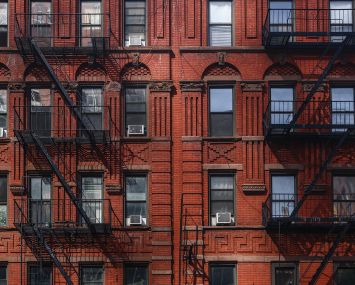Mayor Bill de Blasio must be beside himself now that the 421a tax benefits program has expired. Labor’s unwillingness to agree to reasonable wages for construction workers has dealt a crushing blow to the mayor’s objective of creating/preserving 200,000 units of affordable housing over the next 10 years. “Preserving” is always a necessary hedge word when politicians employ it, as it is impossible to accurately determine how many units get preserved. This provides elected officials with wiggle room when examining actual results versus numerical projections. However, new construction is a critical component of any initiative to increase affordable housing in the city. Without the 421a program—or some kind of equivalent—even a fraction of this target is outlandishly optimistic.
There is no doubt that New York City is in dire need of more affordable housing for residents across a broad range of earning levels. Affordable housing is typically thought of as housing for the poorest among us; however, the working class is an equally important segment of society that requires housing within the city’s boundaries. Firefighters, police, teachers, mechanics, bakers and hundreds of other types of workers earn good wages, but still cannot find affordable housing in this town. In fact, according to a May 2015 Furman Center study, about 30 percent of New Yorkers spend over 50 percent of their earnings on rent, which classifies them as “severely rent burdened.” Normally, rent should top out at about 30 percent of earnings. It is clear that creation of affordable housing is essential for the future success of the city, the population of which is expected to grow by over 1 million by 2025.
But it’s not just a question of more people needing housing. There are now more millennials than Baby Boomers and Generation Xers in this city. Millennials are coming into the work force with triple the amount of student debt that past generations had. There is almost a direct inverse correlation between the level of student debt and the home ownership rate among millennials, meaning that their demand for rental housing is increasing dramatically. This fact, combined with the increasing trend toward urbanization, will continue to exert upward demand for rental units for years to come.
Currently two-thirds of the city’s 3.3 million dwelling units are rentals. Unfortunately, about half of those units are rent regulated, essentially removing them from the stock of units available to potential renters. Many city residents are not in a position to go out and buy condos or co-ops, so producing new rental housing is critical to meeting the demand. The demise of 421a is a real problem in terms of producing new rental housing (both market and below-market). And while 421a benefitted both condo and rental construction, it was much more impactful on rental construction.
Many tenant advocates applaud 421a’s expiration, claiming that it will lead to a reduction in land values, which will lead to creation of more rental housing. This could not be further from the truth. While the elimination of 421a will exert downward pressure on land values, this simply creates a large air bubble in the system, during which nothing gets built, and then condo construction will resume and be more prevalent than ever. Let me explain.
When land values fall, land simply stops trading. Sellers don’t sell land for less today than they could have gotten yesterday. Land values already began to fall in 4Q15 even before 421a expired. This was just due to market conditions, and the elimination of 421a will simply exacerbate this trend. If we use the last cycle as an example, in 2006 there were 321 development sites sold in Manhattan at an average price per buildable square foot of about $375. By 2009, the average had fallen to about $325, just an 11 percent drop. However, there were only 13 sales—a 96 percent drop. And users planning on building for their own occupancy purchased 11 of those 13 sales. In an environment with falling land prices, sellers simply do not capitulate.
So the expiration of 421a will exert downward pressure on values, volume will drop substantially and very few buildings will get constructed. For those developers who have already bought the land and planned to use 421a, expiration of the program significantly impacts the feasibility of these projects and could push more of them in the direction of condominium development. Remember that in some areas within the outer boroughs, even if land were free, rental construction would not be feasible without real estate tax relief.
Essentially, this issue just comes down to math. Labor is fighting for higher wages and has dug in, as all of its members are busy on projects today. As this pipeline of constructions nears completion, the reality of this pending air bubble in supply will become apparent and labor officials will be more willing to negotiate reasonably. Unfortunately, new legislation is required and, in an election year, not much is likely to happen on an issue like this. We could, therefore, be without a 421a-like program until well into 2017. The collateral damage will be profound. This is bad for affordable housing, bad for labor, bad for the mayor, bad for the local economy and, simply, bad for New York.
Robert Knakal is the chairman of New York investment sales for Cushman & Wakefield.


